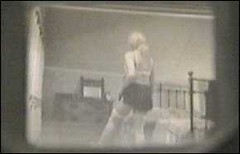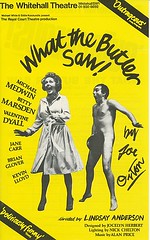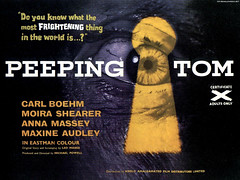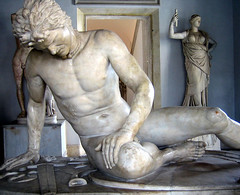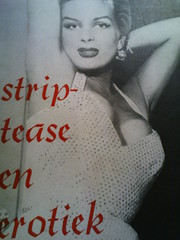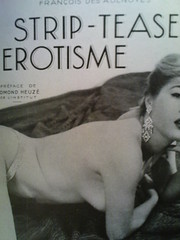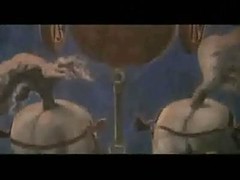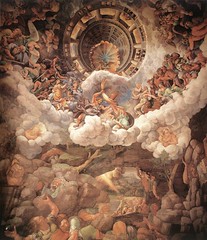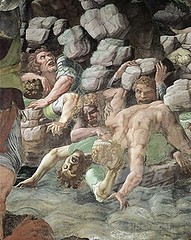I have received questions about the signification of What the Butler Saw in my post on the Düsseldorf erotic art exposition [1].
I’ve introduced two fictional characters on this blog. One has been rather active, Sholem Stein[2], another, Waloli has only done three posts[3]. The butler may be third character (although the only character I now feel comfortable with – in terms of what kind of message he can bring – is Sholem Stein.
But I sometimes feel it’s easier to express things in the third person, like Facebook invites you to do in their status updates.
The butler is the voyeur, the ultimate peeping tom, the man who sees everything but whose duty it is to remain silent. Silence is golden, remember?
As for the encylopedic stuff:
What the Butler Saw first referred to an early mutoscope softcore series of erotic films.
Mutoscopes were a popular feature of amusement arcades and pleasure piers from the 1890s until the mid-20th century. The typical arcade installation included multiple machines offering a mixture of fare. Both in the early days and during the revival, that mixture usually included “girlie” reels which ran the gamut from risqué to outright soft-core pornography. It was, however, common for these reels to have suggestive titles that implied more than the reel actually delivered. The title of one such reel, What the Butler Saw, became a byword, and Mutoscopes are commonly known in England as “What-the-Butler-Saw machines.” (What the butler saw, presumably through a keyhole, was a woman partially disrobing.)
English playwright Joe Orton appropriated the title What the Butler Saw to make a theatrical farce of the same name, first staged in London on 5 March 1969. Cinema-goers recognised situations used by Orton’s contemporaries, the Carry On comedians of the late 1960s. For example, Carry On Doctor was showing whilst the play was being written in 1967.
An early 1970s reference is the title of the film What the Swedish Butler Saw, also known as Champagnegalopp, a Swedish film from 1975 directed by Vernon P. Becker. The story is based on the Victorian anonymous novel The Way of a Man with a Maid. This sex comedy, in English known as What the Swedish Butler Saw or Confessions of a Swedish Butler, the film starred Ole Søltoft and Diana Dors.
As of the 2000s, the expression What the Butler Saw has functioned as a byword for voyeurism in general, much like peeping tom before it.
A lovely surprise. I am spinning at a party, so it seems. Dear me.

